
A young boy disapproves of his grandmother dating her boyfriend, Bob, because she spends more time with Bob than with him, and he tries to find ways to separate them before their wedding.
Catalog sorted by age group

A young boy disapproves of his grandmother dating her boyfriend, Bob, because she spends more time with Bob than with him, and he tries to find ways to separate them before their wedding.
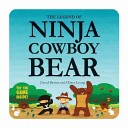
The ninja, the cowboy and the bear do everything together — they paint pictures, compare cloud shapes in the sky, fly kites and much more. Though each friend is very different from one another, they enjoy each other’s company. Until one day when they begin quarreling and compete to see which one is the best. The bear can pile up rocks the highest. The cowboy can collect the most raspberries. The ninja can catch the most rabbits. When each contest leads to more resentment, it seems the friends will never stop disagreeing. Only when they learn to be considerate of their differences do they finally realize how much they appreciate each other. The cute, yet stylized artwork combined with a fun story about friendship and celebrating differences make this legend an unforgettable one. This playfully illustrated picture book also includes instructions for the Ninja-Cowboy-Bear game, which is similar to Rock Paper Scissors except that kids use their whole body.
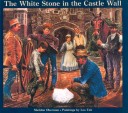
It may not be true but it could be – this story of how a single white stone came to be in the wall surrounding Casa Loma, the magnificent medieval castle that stands in the middle of Toronto. John Tommy Fiddich lives in Yorkville, tends the family vegetable patch, and considers himself the “luckiest boy in town.” When a hailstorm wipes out the vegetables, he goes from being the luckiest to the unluckiest. Then word gets out that Henry Pellatt, the eccentric millionaire who brought light to the city and built Casa Loma, is offering one dollar for brown stones to place in the wall going up around the castle. After trudging through the city all day with his stone, John reaches the castle only to find that rain has washed it white. But Henry Pellatt accepts the stone for his wall, rewarding John for his hard work, making him again “the luckiest boy in town.” The trip through the streets of Toronto, from Yorkville to Casa Loma, makes for a book as enchanting to young and old as the fabulous castle that inspired it.

A new book from the team of Marthe Jocelyn and Tom Slaughter,Which Way?is an invitation to explore and understand the concepts we see every day in the signs around us. Navigating the world involves many decisions. How do we know which way to go? Will we pedal or drive? Do we need a map? Will we detour to see the scenery? This colorful book takes the reader along the right path; introducing road signs, directions, stoplights, and common sights that are part of any journey.
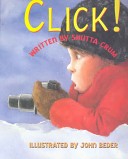
As morning breaks over a snowy landscape, a little cub eagerly starts the day. And in a snow-covered cabin, a small hunter bounces on the great hunter’s bed as he too gets ready for a big adventure. But the moment this delightful parallel story progresses, the reader sees that the “hunters” are armed with cameras only, as they look for an opportunity to take a picture from a safe distance.But little bears and little hunters have a way of wandering off. And even though their mothers take care to protect the young, it isn’t long before bear and boy find themselves face to face. Then, CLICK, the little hunter gets his shot before the two go their separate ways to find their mothers again.A rhythmic fantasy for all young adventurers ready to explore, Click! captures just the right balance of gentle humor and comforting warmth.
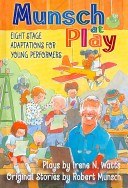
Presents simple stage adaptations, suitable for school use, of eight stories by Robert N. Munsch, along with staging suggestions and ideas for easily obtainable sets, props, and costumes.
The stories included are: • Angela’s Airplane • Stephanie’s Ponytail • Mortimer • 50 Below Zero • Mud Puddle • Millicent and The Wind • Murmel, Murmel, Murmel • The Paper Bag Princess
An older unhappy, unkind gentleman is reminded he was not treated kindly by the other children in school is befriended by a scraggly cat ( with persistence from the cat). He becomes nice again.
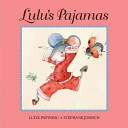
Young Lulu has the best Mama and Papa in the world and the best pet ladybug, Lili-Poo. After her Mama tells her a story and her Papa sings a goodnight song, Lulu drifts gently off to sleep in her favorite soft-as-a-butterfly-kiss pajamas. In the morning she decides “never ever” to take them off again! What will she do when her friends laugh and her beloved pajamas show the scars of a busy day at school? Suddenly Lulu can hardly recognize her pajamas, and they sure don’t smell like a pink dream anymore. Lulu’s spirited, independent handling of a childhood rite of passage – choosing one’s own clothes – will resonate with both children and parents. Irresistible illustrations and Lulu’s note-perfect child’s voice will make Lulu’s Pajamas a bedtime favorite sure to become as well-worn as an old pair of pajamas.

Stanley’s people are so preoccupied with primping him for the dog show in the park that they forgot his breakfast. This makes Stanley “very” grumpy. At the park, Stanley meets up with his old friends Nutsy, Alice and Gassy Jack. Together the friends look longingly at the grand prize: the biggest, most scrumptious-smelling dog cookie ever. Once Stanley gets a whiff of its bubbling cheese, sizzling bacon and apple pie aromas, he’s determined to win. So what if he’s not the fastest, most talented or most beautiful dog in the show? We know that Stanley’s rumbling tummy always leads him into adventure — or a big pile of trouble — and this time is no exception. Join Stanley and his friends in the best dogpile ever as they show us humans that dogs know best, and that what really counts is having fun!